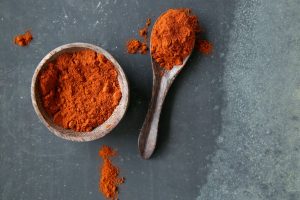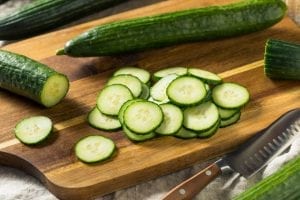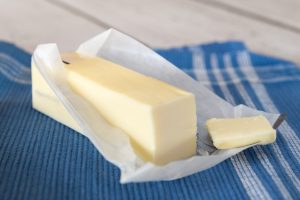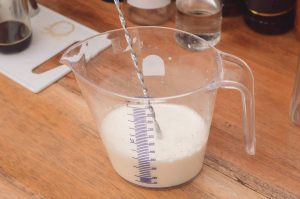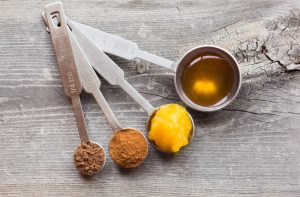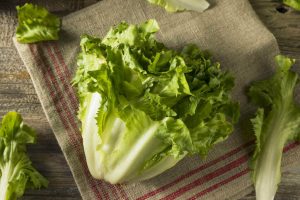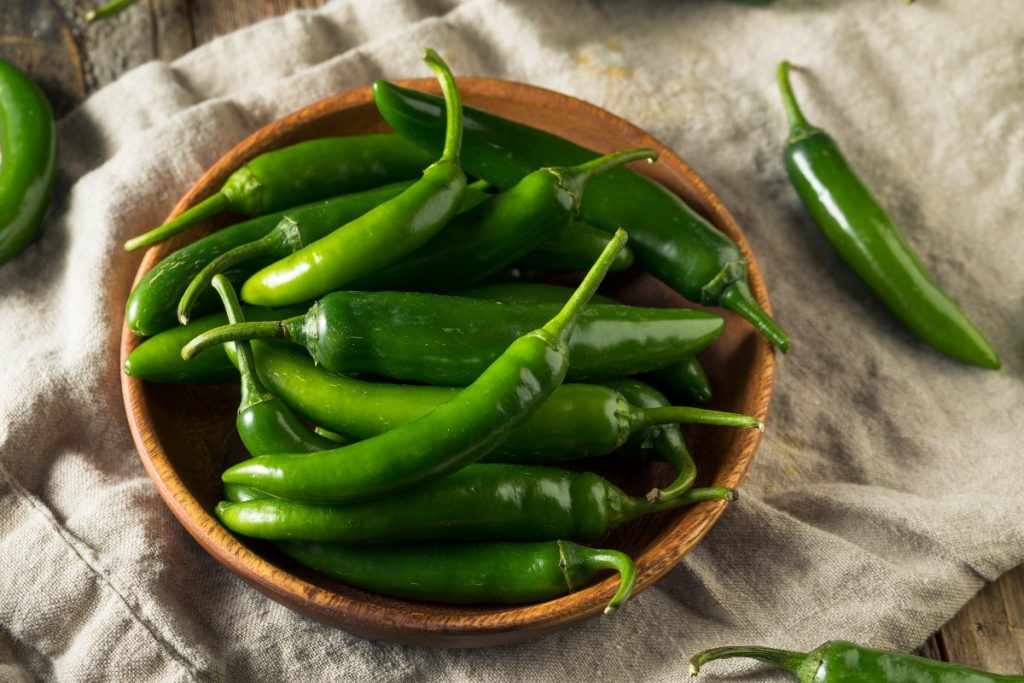
Along with jalapeño and habanero, the serrano pepper is one of the most beloved types of Mexican chiles in the culinary world. You can find them in tons of regional and international dishes from salsa verde, guacamole, and more!
If you haven’t explored this ingredient yet, you can start by learning the basic things about it. Continue reading to find out everything about this chili type. This article also tackles how spicy a serrano pepper is, how it compares to other Mexican peppers, and other useful cooking information.
What Is a Serrano Pepper?
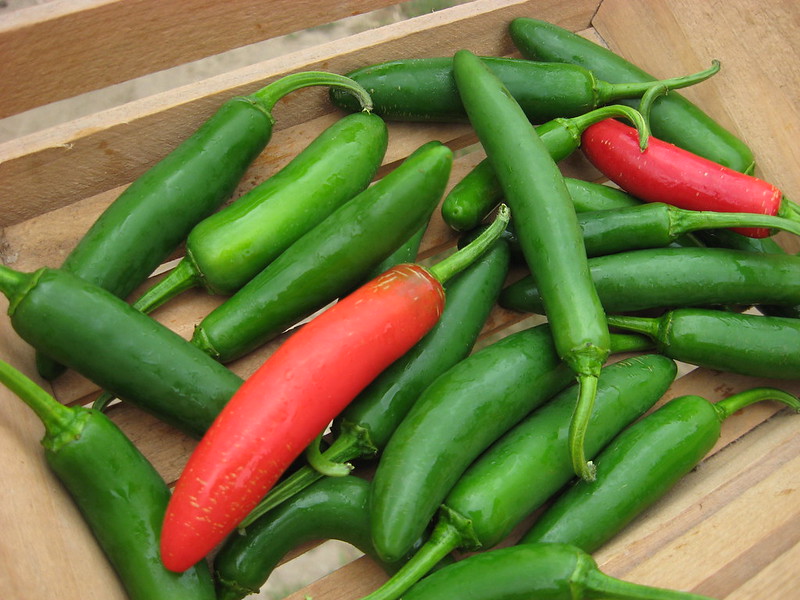
Farmer Daves | Flickr
The serrano pepper (Capsicum annum) is widely used in South American and Asian cuisine. Also, it’s the second-most popular pepper in Mexico, trailing just behind the famous jalapeño. Sometimes misspelled as seranno or serano, this fruit traces its roots to the mountainous Mexican states of Pueblo and Hidalgo. This is actually reflected in the name of the plant, as serrano means “from the mountains,” from the Spanish word for mountain (sierra).
This fruit grows abundantly in warm climates. The serrano pepper plant is particularly easy to cultivate, usually achieving a height of around five feet tall. And, each one can bear up to 50 peppers at once.
So, what do serrano peppers look like? The chilis themselves can grow up to two to four inches long, with a thickness of half an inch. The serranos start as green, and they undergo several color changes as they ripen, from red, brown, orange, to yellow.
READ ALSO: 4 Mexican Oregano Substitutes You Didn’t Know About
What Does a Serrano Pepper Taste Like?
In terms of flavor, the serrano pepper is prized for its fresh hotness. The green ones especially have a crisp grassy taste, accompanied by heat that slowly tingles and creeps up on your taste buds. It may take a while for you to fully grasp the spice level of this chili, but it definitely has a substantial amount of heat. The best serrano pepper substitute is the jalapeno, mainly because it offers a similar yet milder overall flavor.
The size and ripeness of the fruit may also alter the taste of this pepper type. For instance, a smaller serrano chile or chili tends to be hotter than larger ones. And, ripe ones that are red or orange in color tend to be hotter and sweeter. You can also roast them to achieve a smoky pepper taste before adding them to a dish.
READ ALSO: Parsley vs Cilantro: 4 Main Differences You Should Know
How Hot Is a Serrano Pepper?
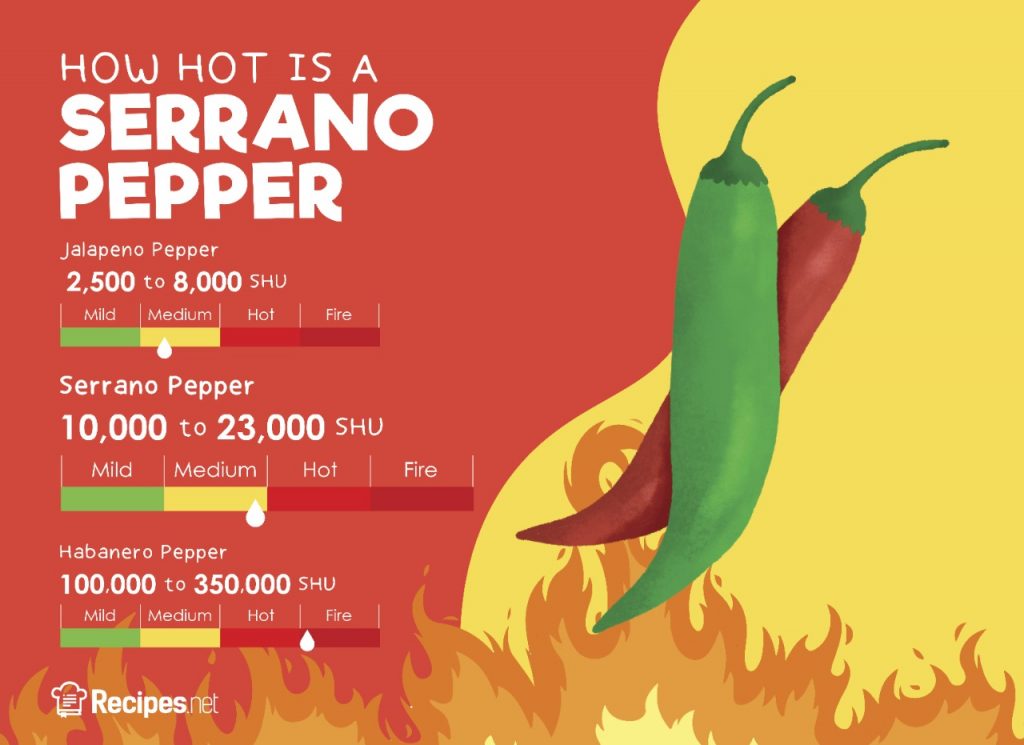
But first, are serrano peppers actually hot? Absolutely! But compared to other chiles, serranos have a heat level that is middle of the road. To put things into perspective, they generally have about 10,000 to 23,000 Scoville Heat Units (SHU). This unit pertains to the concentration of the irritant called capsaicin in the chilis that is responsible for the fruits’ spicy quality. Serranos have a substantial amount of this substance, but it’s far from the amount of capsaicin that the hottest peppers have. Case in point, the spiciest chile in the world is the Carolina Reaper with a whopping 1,500,000 to 2,000,000 SHU.
The ripeness of the fruit may also affect the hotness of the serrano chili peppers. You might be wondering which is hotter, red or green fruits? The riper the serranos are, the spicier they get. In that sense, green peppers are milder compared to red ones.
Serrano vs Jalapeno
Serranos and jalapeños (sometimes misspelled as jalepenos) are both Mexican peppers. They are somewhat similar in terms of appearance, so it’s understandable how people confuse the two. On the whole, though, a serrano pepper is smaller in size. Also, these two have a similar vegetal flavor profile. Their main difference lies in the spice level.
So, which pepper is hotter, serrano or jalapeno? On the Scoville scale, jalapeno peppers can have around 2,500 to 8,000 SHU. This is less than even the milder serranos, so you can definitely say that a chile jalapeño would be much less spicy than the former. Similar to a serrano, a green jalapeno pepper is less spicy compared to a red one.
Serrano vs Habanero
Even though serrano chiles can already be too hot for those who aren’t used to spicy food, they are still no match to habanero peppers. After all, the latter is the hottest Mexican pepper to date. A chile serrano is tame compared to habanero that has a hefty spice level of 100,000 to 350,000 SHU on average. This is more than 17 times hotter than the former.
How to Cook With Serrano Peppers
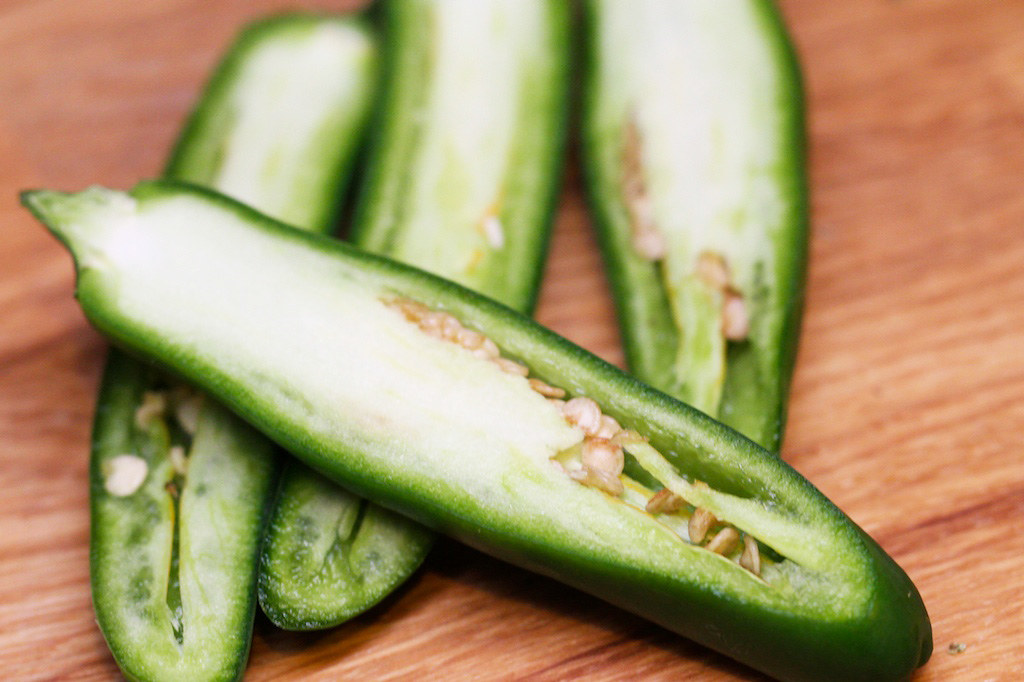
Michelle@TNS | Flickr
Before everything else, we recommend wearing cooking gloves and goggles before cutting up a piece of pepper. On top of this, avoid touching your face because the oils from serrano pepper can irritate your skin and eyes.
To prepare the serrano peppers for cooking, you have to rinse them first to remove dirt and other impurities on the fruit’s skin. Next, cut off the stem. You can try to taste the flesh of the part you removed to test the chili’s spice level. Proceed to cut the peppers into the shape that the recipe calls for. And if you find that the pepper is a tad too hot for your liking, don’t worry. To make the chili less spicy, you can remove the serrano pepper seeds which pack the hottest sensation.
Have your prepared serrano pepper raw in salsas, salads, and marinades. You can also puree it with other ingredients to make dips, or cooked in stews and soups. To enhance its flavor, it’s a popular option to roast the fruits first.
READ ALSO: What Is Savory: All About The Herb and 4 Tasty Recipes
5 Serrano Pepper Recipes to Try
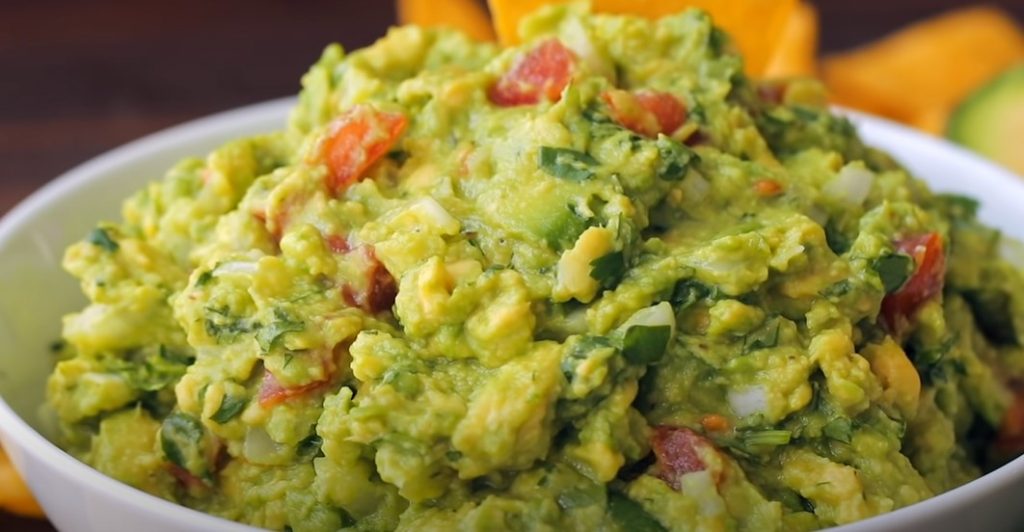
Wondering what to do with these hot peppers? Look no further because we’ve gathered the best serrano pepper recipes that you can try to recreate at home.
- Loaded Carne Asada – Blend serranos with avocado and other herbs and spices to achieve creamy guacamole with a kick. This works perfectly as a topping for a dish of charred carne asada tortilla wraps.
- Chimichurri ‘Cued Chicken – For this serrano pepper recipe, the chili works with poblano to spice up the chimichurri mixture that will be used as a fresh topping and dipping sauce for some succulent grilled chicken.
- Salsa Verde Chicken Enchiladas – With this serrano peppers recipe, serranos are pureed with vegetables and herbs to create a deliciously spicy salsa verde to serve with chicken enchiladas.
- Spicy Three-Chile Guacamole – If you enjoy spicy food, you’ll love this chili peppers recipe that calls for charred serranos, jalapenos, and poblanos. These add a pungent and smokey quality to the savory avocado mixture.
- Crispy Sweet Potato Pancake Lettuce Wraps – In this Asian-inspired dish, serrano peppers can be used as a substitute to Thai chilis for the Vietnamese condiment called Nuoc Cham. This spicy dip tastes delicious with vegetable pancakes.
READ ALSO: Coriander Seeds: Herb or Spice and Its Uses
Where to Buy Serrano Peppers
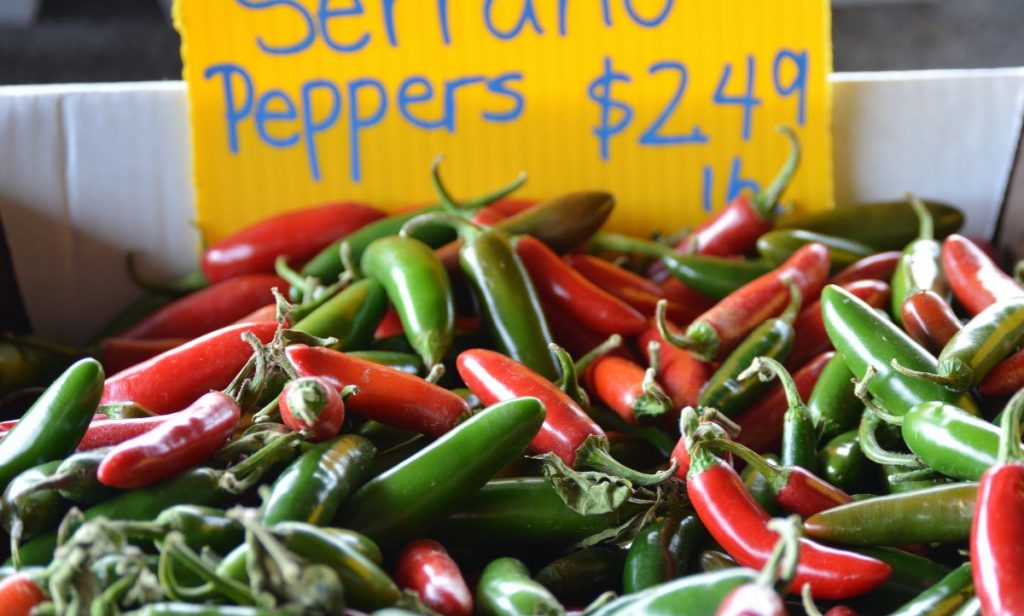
Jason Rosenberg | Flickr
You can typically find a bunch of serrano pepper fruits in local grocery stores year-round. Mexican markets are also a good place to get them. When these hot pepper plants are in season during summer, you can also check your local farmers market to see if they’re available.
If you’re planning to buy some, we highly recommend getting pieces of serrano pepper that are still firm and fresh. Ideally, they should not have wrinkles or holes. Also, you should decide the spice level that you’d want from your serrano chilis. Go for green ones for something milder, or red ones if you want a spicier ingredient.
How to Store Serrano Peppers
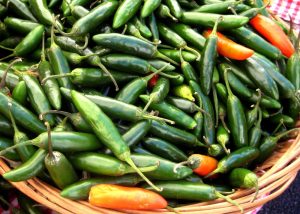
Jchatoff | Flickr
It’s best to store serrano peppers dry to keep them fresh for a longer period. Also, don’t wash them yet if you don’t plan on using them immediately. There are several methods you can do for storing serranos, and the first one is by keeping them in the crisper drawer of your fridge. Simply wrap them in a paper towel or plastic bag, and they should stay good for one to two weeks.
To keep them longer, freezing serrano peppers is a good option. All you have to do is cut them up and put them in airtight freezer containers beforehand. This method will keep them good for up to a year.
Making some pickled peppers is another popular preservation method you can try. You can leave the pickled serrano peppers in a jar for up to three weeks. Also, you even try canning serrano peppers to make them last for months.
Lastly, you can try drying serrano peppers and make some red pepper flakes that could last up to three years.
A Serrano Pepper Is Spicy Without Being Overwhelming
Now you know that a serrano chili pepper has just the right amount of heat to give your dishes a kick. It won’t necessarily numb your palate as much as a habanero would, but there are still ways to make it less hot. Explore plenty of dishes with raw, grilled, or pureed serranos in recipes beyond Mexican cooking!
Was this page helpful?
Read Next: 27 Different Types of Coffee, Explained
